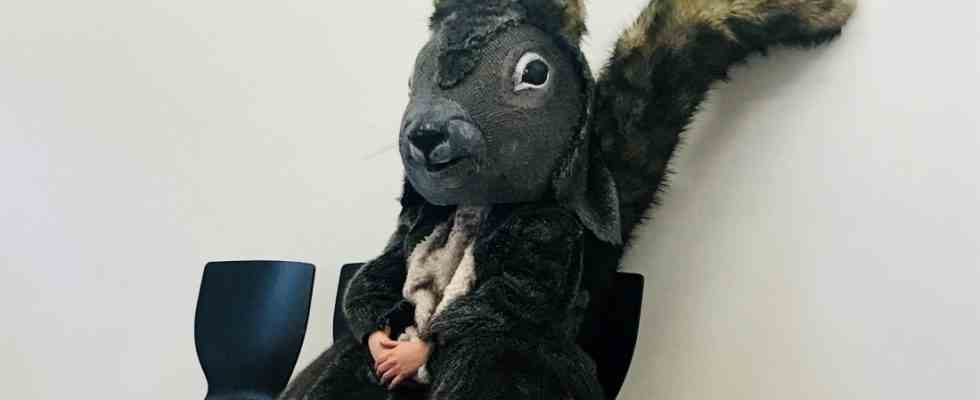Ahab is insane, even the last sailor will realize that at some point. Obsessed with a plan to kill Moby Dick, he sails across the ocean, risking not only his own life but that of the crew for his personal vendetta against a whale. “There is no animal folly on earth which the madness of man does not infinitely surpass,” summarizes “Moby Dick” author Herman Melville – but why does Ahab hunt Moby Dick? And how much of his madness is in us when we hunt animals today?
Animals from every perspective
The philosopher Christian Schüle and the author Thomas Lang will explore the question on May 24 in Munich’s Gasteig. In the panel discussion “What we hunt when we hunt the whale” they talk about the origin of human feelings of superiority, discuss animal-ethical perspectives on livestock and take a critical look at the power relations between humans and animals. The conversation is part of the series of events “Fate Companions – of Humans and Animals”, which is this year’s program focus of the Open Academy. The academy is part of the Munich adult education center and regularly organizes discussion and exchange formats on changing topics.
From March to September, lectures, discussions and guided tours on the subject of animals will take place at various university locations. The academy is also planning a science slam, interactive formats, art exhibitions and a film screening. The approximately 220 events not only examine anthropozoological relationships, but also deal with the work of and with animals and address animal diversity as well as the ongoing extinction of species.
Adorable or annoying
Each item on the program approaches the animals in its own way, from creative to radically objective – or even comedic, like the “Zoon” art exhibition. From the end of May to July, six artists will be presenting painted, drawn and performative works in the Gasteig gallery, which take up animal myths and humorously deconstruct human-imagined animal attributes. The exhibition will be opened on May 21 by the artist Valentina Pino Reyes, who assumes the shape of a gray squirrel for her performance piece “The Situation” and lets the otherwise highly erratic animal take a seat in the waiting area. How much patience can a flight animal have? Does it feel uncomfortable, forgotten or alien?
Because the rodent actually comes from North America. In recent years, however, it has colonized more and more European forests and is increasingly supplanting the native species. It has therefore been on the EU list of undesirable species for seven years. In Reye’s performance piece, on the other hand, the immigrant flight animal appears reserved. “That in itself is a really crazy break,” says Petra Gerschner.
Alexanda Vogt also addresses the close connection between animals and humans in her art.
(Photo: MVHS Munich)
The short way from animal to human: Works by Lisa Endriss can also be seen in the exhibition.
(Photo: MVHS Munich)
As a curator, she is not only responsible for the concept of the exhibition, but also for its name: “Zoon” is ancient Greek and means living beings. “The word expresses equality, not hierarchy,” she says. At the same time, the term is inevitably reminiscent of zoos, whose cages prevent any interspecific encounter at eye level – a contradiction that is intended. Because the exhibition should also serve to question one’s own view of animal creatures. To this end, the artists devote themselves, among other things, to the status of animals in capitalist economic systems, their humanization and traditional thought patterns with which humans divide other living beings into lovable or annoying. “One animal species dies out unnoticed, others are heroized,” says Gerschner. “Zoon” not only artfully stages this contradiction, but also offers a stage to those animals that otherwise experience little human affection.
Animal afterlife
The spider is one who knows this all too well: it often has to be used in art and literature for metaphors of horror and disgust. Therapist Ursula Riedinger is now proactively taking on the insults of the eight-legged friends and on April 24th will explain how to combat your fear of spiders. On the other hand, it could actually be creepy when the nature photographer Andreas Hartl not only presents animal portraits on May 24th, but also reports on the extinction of his protagonists in the Upper Bavarian Isental – and unusually pious when various religious representatives are asked about animal life after death on April 20th become.
The organizers try to approach animals and their relationship to humans from every angle, capturing as many perspectives as possible. They also hope for the support of their visitors: With a bar camp on March 25, they want to encourage them to think about nutrition, livestock and factory farming together. Questions are just as welcome in the collective brainstorming session as are already sophisticated project and workshop proposals.
When the cuckoo calls
The program series will be opened on Wednesday evening by the evolutionary biologist Matthias Glaubrecht, whose lecture will be followed by an interactive music production: Karl Liebfried creates an audience choir with bird water whistles, which is accompanied by Rozenn le Trionnaire on the clarinet. With the chirping of birds and the sound of the clarinet, which at least since Camille Saint-Saëns’ “Carnival of the Animals” involuntarily reminds one of the call of the cuckoo, the Academy not only welcomes spring on this evening, but also invites you to spring, which has now finally awakened from hibernation Exploring wildlife extensively.
“Fate companions – of humans & animals”program focus of the Open Academy of the MVHS, March 22 – September 29 at changing locations of the MVHS

